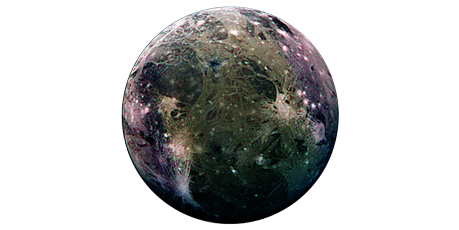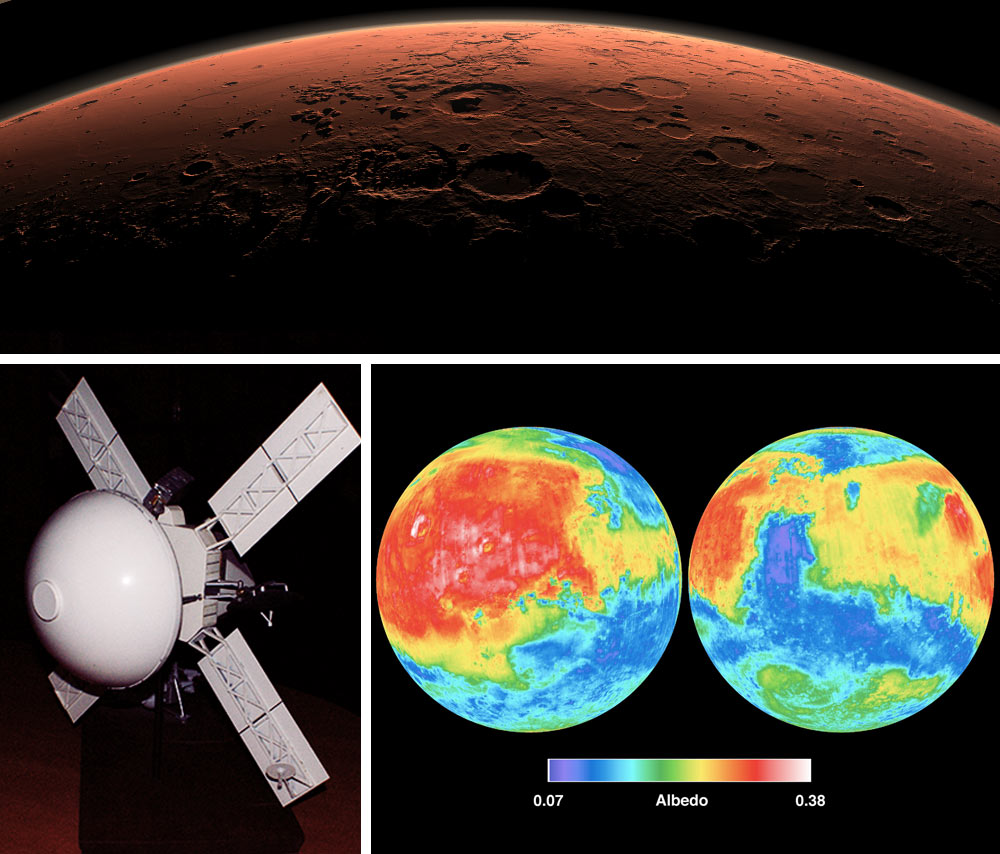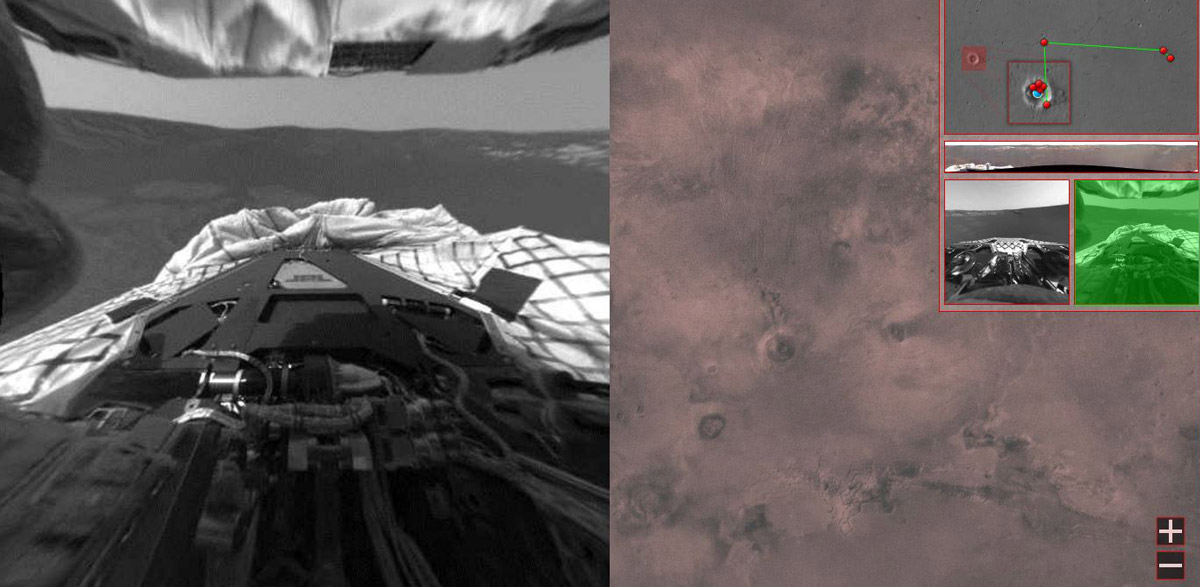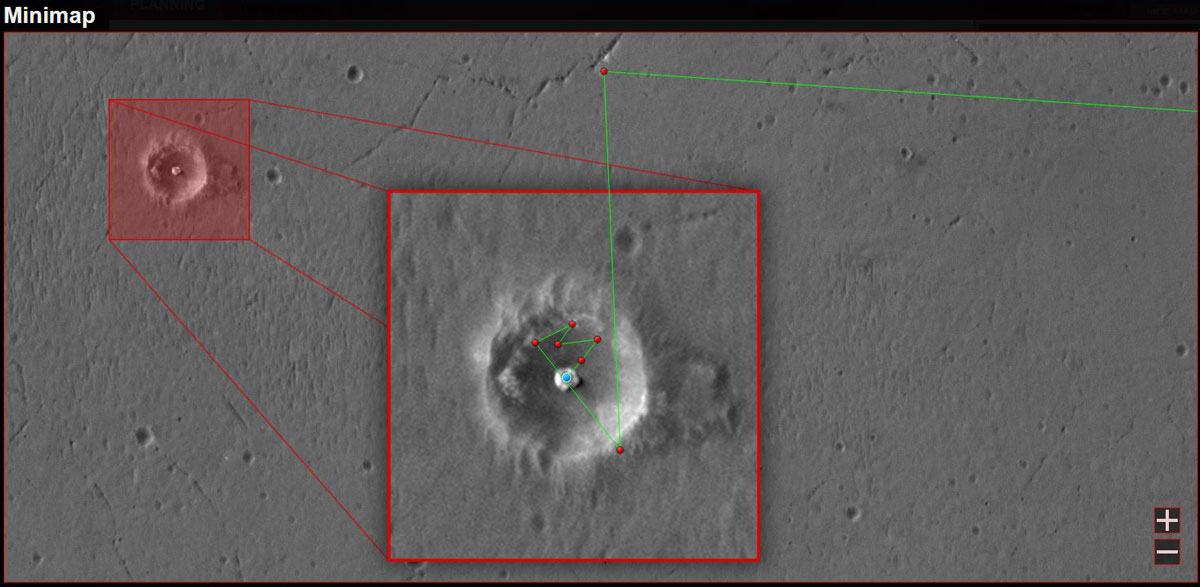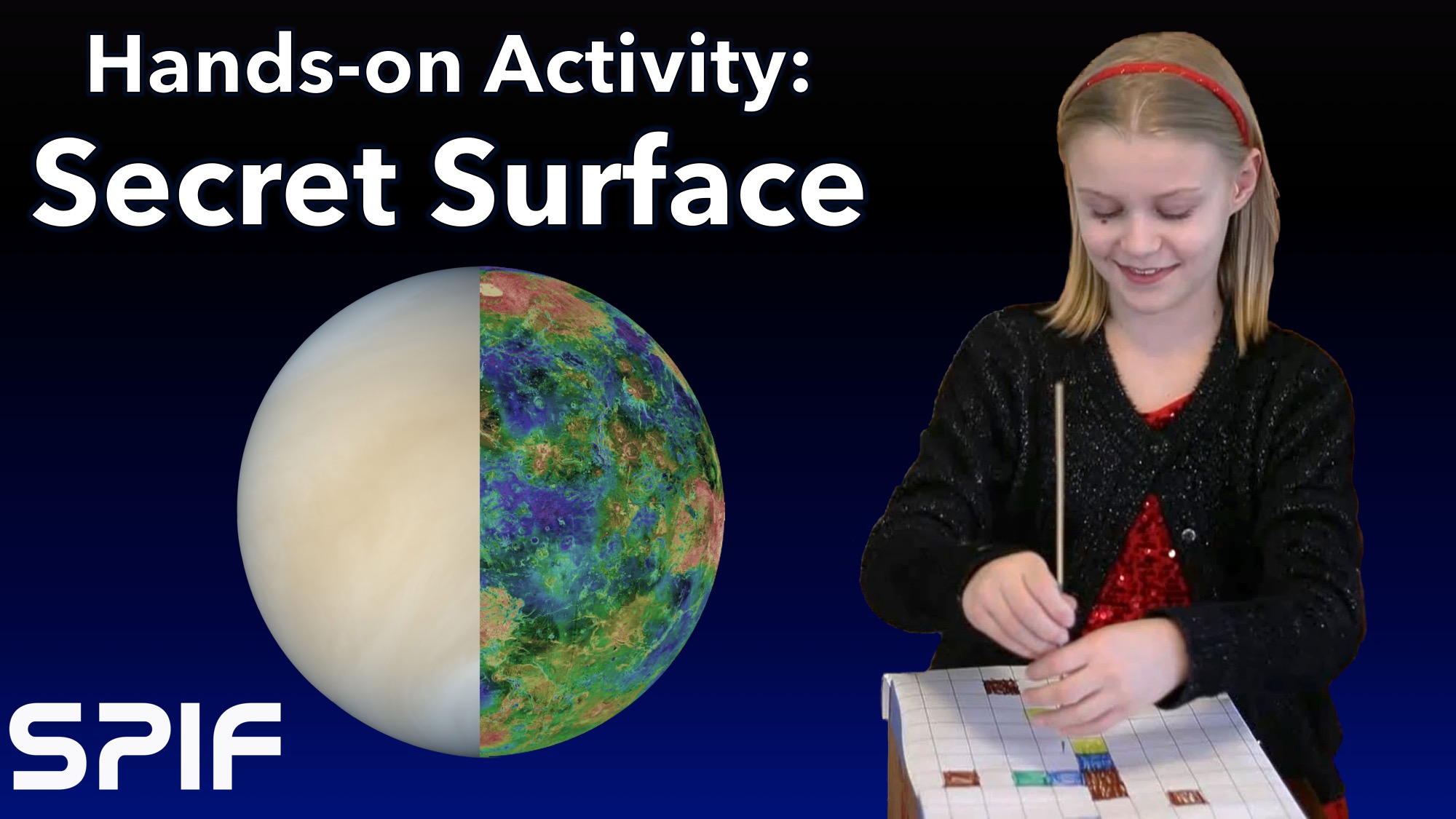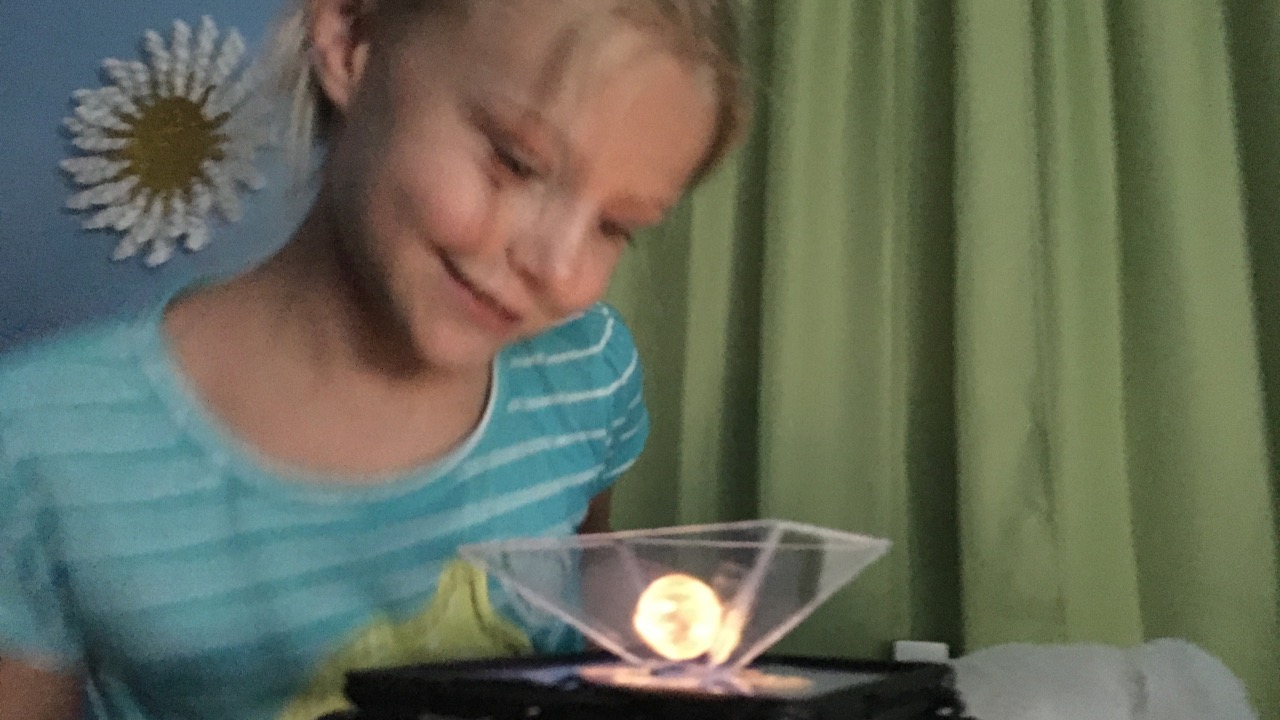Our staff have a wealth of resources for delivering engaging and educational experiences for you and your students, including hands-on activities, planetary images, presentations, meteorites, globes, spacecraft models, the Magic Planet, and more.
Bring your students to SPIF
SPIF is visited by school classrooms, clubs, and summer camps from the surrounding community, where they take part in discussions of planetary images and participate in demos and hands-on activities.
We will come to visit you
SPIF representatives will do off-site events anywhere within a 3-hour drive of Cornell campus. We regularly visit schools and libraries in rural communities to do presentations, demonstrations, and lead hands-on activities in classrooms, assemblies, and community gatherings.
Virtual Programs for All
We offer presentations, facilitate Q&A sessions, and lead hands-on activities remotely. We've worked with classrooms as far as Puerto Rico and Alaska! We continue to offer our virtual programs developed through our Shelter in Space Remote Learning Program, which we created to support distance learning during the first two years of the COVID-19 pandemic.
Presentations
- A Spacecraft Tour of the Solar System 2024 Edition *
- Europa: 20,000 Leagues Over an Alien Sea
- Perseverance, Ingenuity, and the Search for Life on Mars
- Artemis: Returning to the Moon, then on to Mars
- Where Are the Aliens? Understanding the Fermi Paradox and Drake Equation
- Origins and Aliens: Looking for Life in All the Right Places *
- What's in a Name? How We Decide What to Call Things in Space
- In the Shadows: The Wonder, Beauty, and Science of Eclipses
- Shooting the Moon: A History of Photographing our Cosmic Neighbor
- Postcards from Beyond: A Photographic Timeline of Exploration
- Surviving Mars: The Challenges of Off-World Living
- Moons of the Giant Planets: Was Star Wars Right? *
- Interplanetary Illusions: How Space Can Trick You
- Imagining the Solar System: Planetary Storytime
- Roving Mars: A Story of Spirit and Opportunity
- The Cassini Mission to Saturn: A Photographic Tribute *
Hands-on Activities
- Secret Surface: Mapping Worlds with RADAR *
- Homemade Comet: Planetary Time Capsules and the Origins of Life
- Navigating the Solar System *
- Color Wonder: How Rainbows Reveal What the Universe is Made Of
- Craters, Craters, Everywhere
- Gravity of the Planets *
- Smells of the Planets *
- Dance of the Planets
- Frigid Geology: Icy Canyons and Water-lava Volcanoes
*Features the Magic Planet!
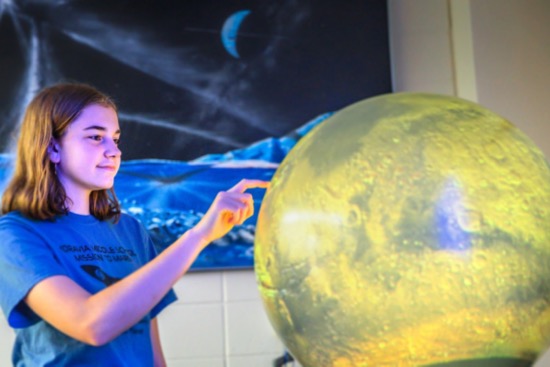
More resources
Sagan Planet Walk: Take a virtual tour of the Solar System
Follow Us on Facebook Stay up-to-date on all the latest discoveries and upcoming public events.
![]() YouTube Watch SPIF videos, including our Minute in Space series and instructions for hands-on activities.
YouTube Watch SPIF videos, including our Minute in Space series and instructions for hands-on activities.
The Extraterrestrial Virtual Field Experience (EVFE) is a game-like, computer based laboratory activity for introductory geology students at junior high, high school, and undergraduate levels. The EVFE is intended for either two or more sessions of an Earth Science class as a syllabus enrichment tool, or as an after-school enrichment activity for a science-oriented student group.
Open EVFE Activity Interface
We are currently in a prototyping and play testing phase. Our prototype module puts students in the role of the science team for the Mars Exploration Rover Opportunity, tasked with the responsibility to use the spacecraft's instrument suite to make hypothesis and evidence driven discoveries about the role of water in the history of the Meridiani Planum landing site. We are committed to producing at least four additional modules covering other missions and scientific subject matter at a rate of approximately one per year.
Links are provided below for the teacher's guide and activity interface. Please feel free to make use of this activity with the understanding that it is a prototype in active development. We encourage and request feedback from educators on ways to make the activity more useful and attractive as a classroom tool. Please send feedback to Chase Million (chase.million@gmail.com).
Secret Surface
Teach kids how scientists use radar to map the surfaces of worlds, like the planet Venus and Saturn's moon Titan, where thick clouds completely hide the ground from view.
DIY Holograms
Create holographic images that float above the screen on your phone or tablet. This playlist will show you how to construct the pyramid and has some cool Solar System holograms to watch.
Make Your Own Comet!
Explore what comets are made of and how their physical characteristics change with time, all in a miniature comet you can hold in your hands.

Ingredients
Required- Water
- Dirt or Soil
- Dry (carbon dioxide) Ice*
- White Vinegar (Acetic Acid)
- Rubbing Alcohol (Ethanol)
- Salt
- Dark Corn Syrup (Saccharides)
- Corn Starch (Saccharides)
*WARNING: Dry ice can be dangerous as it is very cold (-110°F) and can cause frostbite within a few seconds if brought into contact with bare skin. Please have adult assistance and supervision while handling dry ice and always use protective gloves, such as heavy-duty work gloves, oven gloves, or snow gloves, and wear safety goggles. Make sure the gloves are not wet, as the dry ice can freeze the water which can then come into contact with bare skin inside the glove.
Additional Safety and Handling Information: dryiceinfo.com/safe.htm
Where to get dry ice: Dry ice pellets are usually available for sale at grocery stores, butcher shops, or ice cream shops. It is inexpensive, usually not more than $2/lb. Call your local vendors to find out if they sell dry ice pellets and for pricing. Purchase about twice as much dry ice as you think you will need if you’ll be storing it overnight.
Equipment
- Large Mixing Bowl
- Large Mixing Spoon
- Large Heavy Duty Trash Bag
- Plastic or Vinyl Tablecloth
- Gallon Heavy Duty Zipper Storage Bag
- Insulated Container (eg. ice chest)
- Mallet
- Gloves (see above safety information)
- Safety Goggles
Directions
- Gather all your ingredients onto a table, with the dry ice pellets still in the insulated container. Put on safety goggles.

- Unfold the trash bag, but leave it unopened. Line the mixing bowl with it.

- Pour about 0.5 liters (about 2 cups) of water into the lined bowl. Add 2-3 cups of dirt/soil. Add any optional ingredients in small amounts. Mix everything together with the spoon. Tip: Add only a tiny amount of alcohol and salt, as these ingredients will tend to make it harder to freeze the water and hold the comet together.
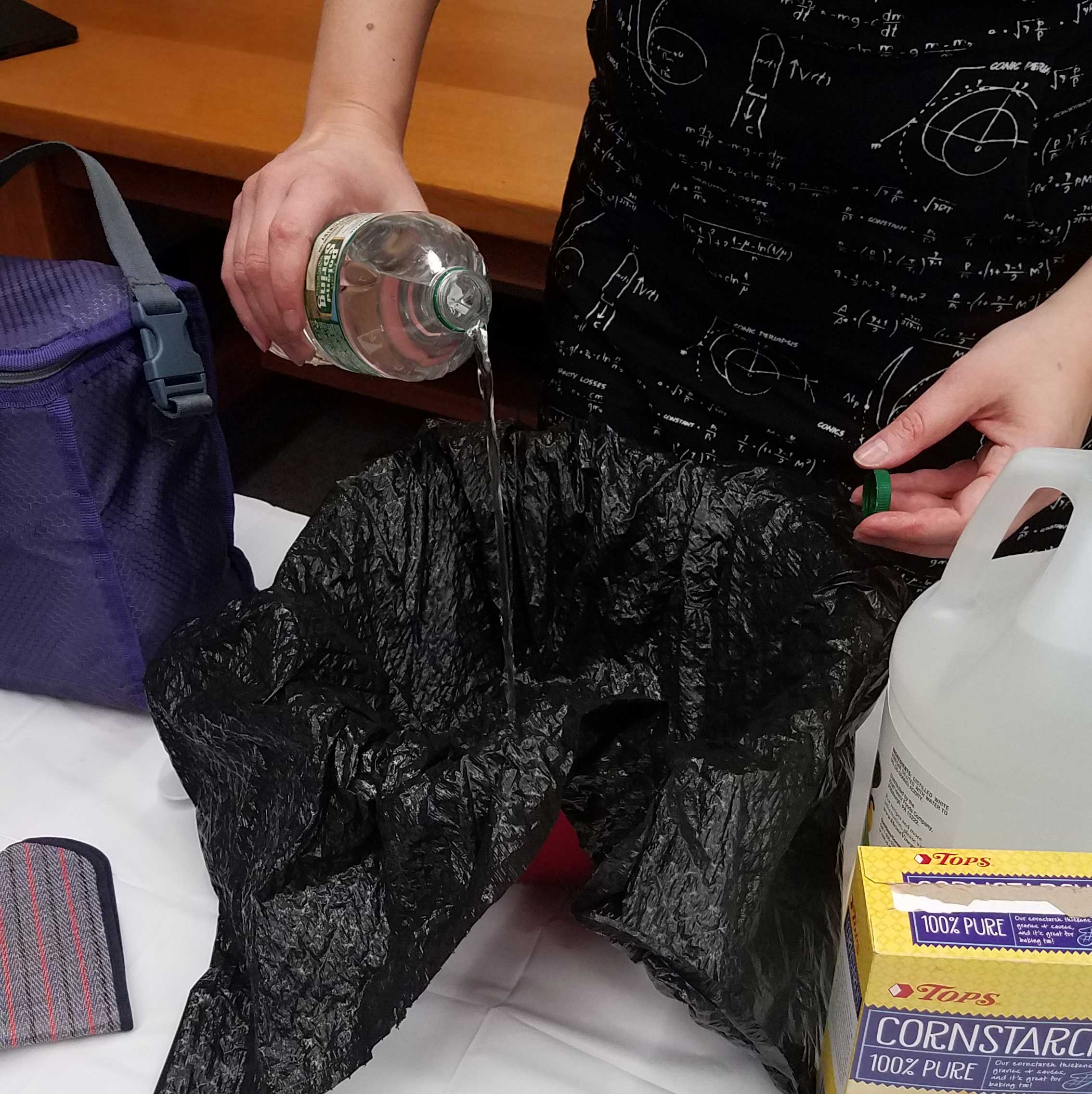

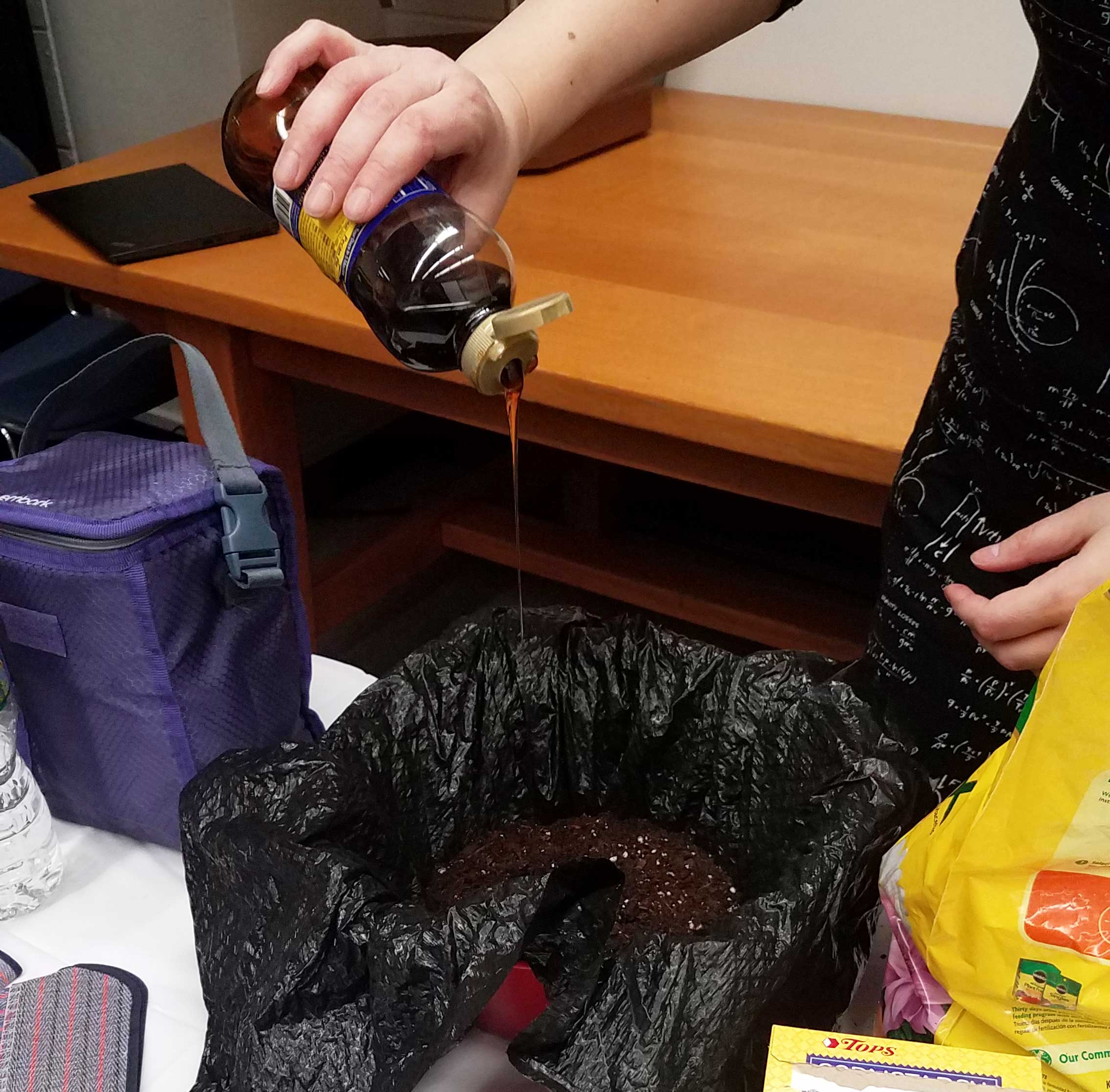
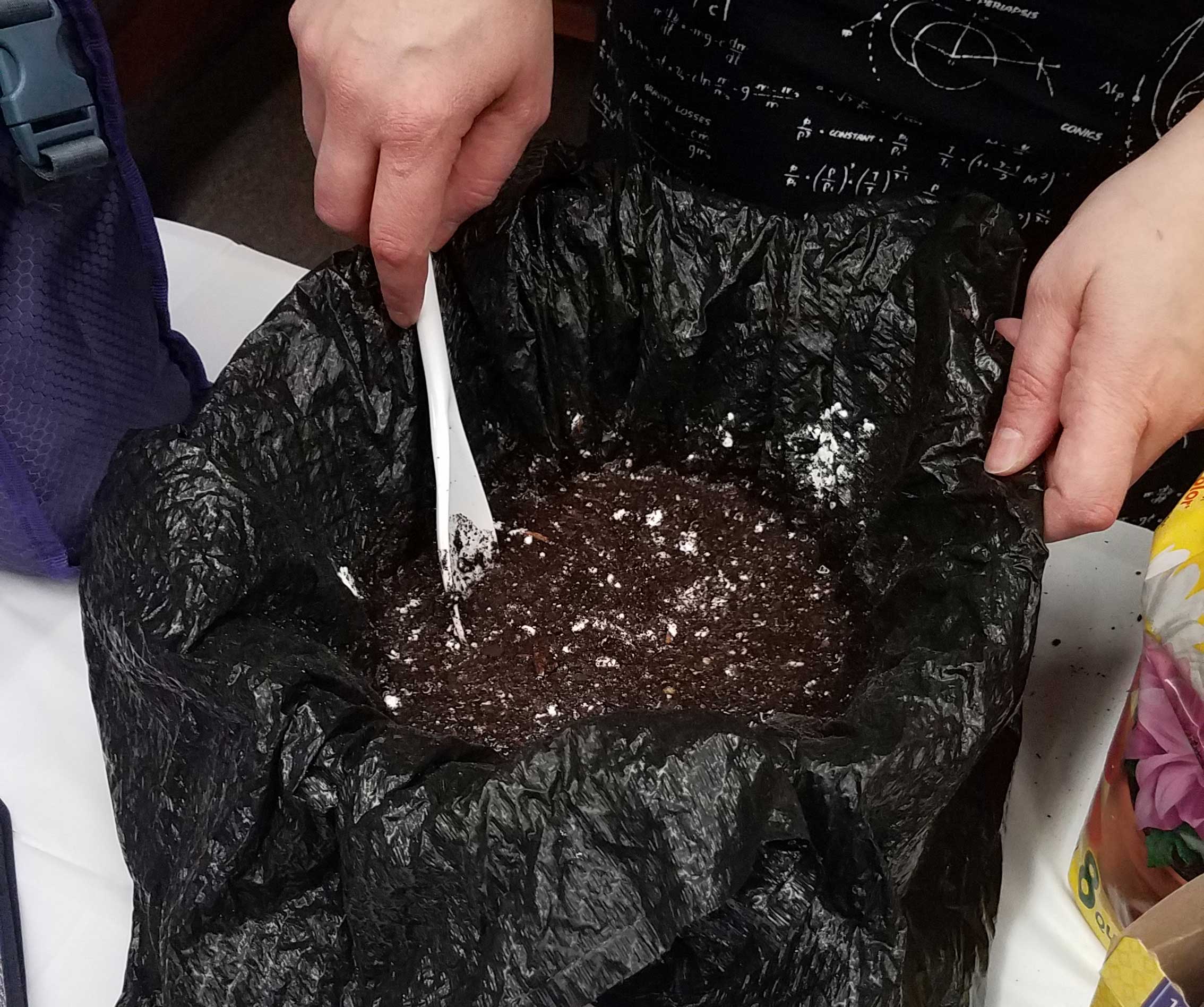
- Put on the gloves. Put about 2.5 pounds of dry ice pellets in the zipper storage bag. Seal the bag most of the way, but not all the way. Lay the bag flat on the table and spread out the pellets throughout the bag. Use the mallet to crush the dry ice. The more you crush it, the better the comet will be. Aim to have all pieces smaller than a half inch. Tip: While crushing the dry ice, have your free hand lightly resting on the zipper end of the bag to help prevent any pieces from escaping.
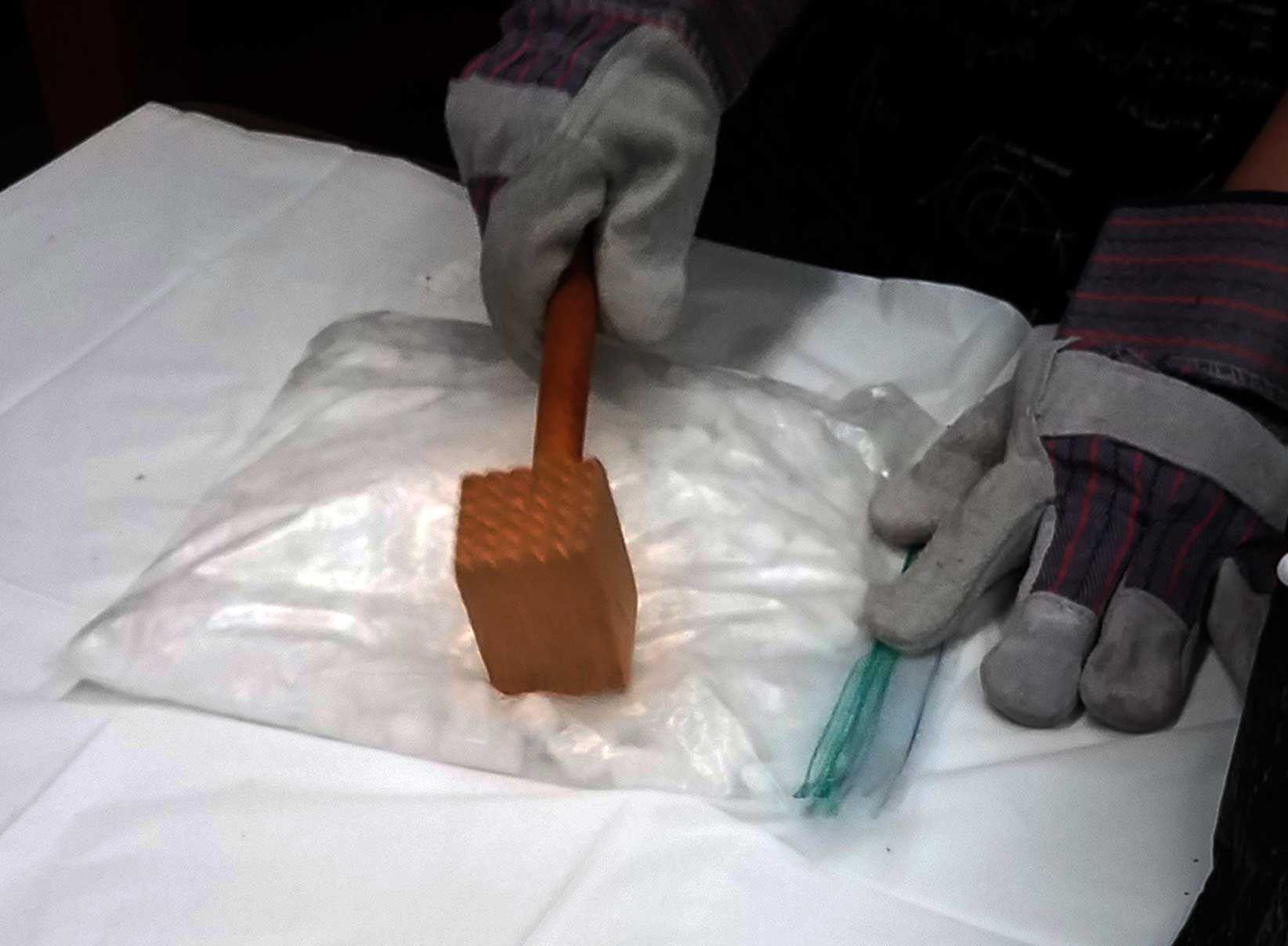
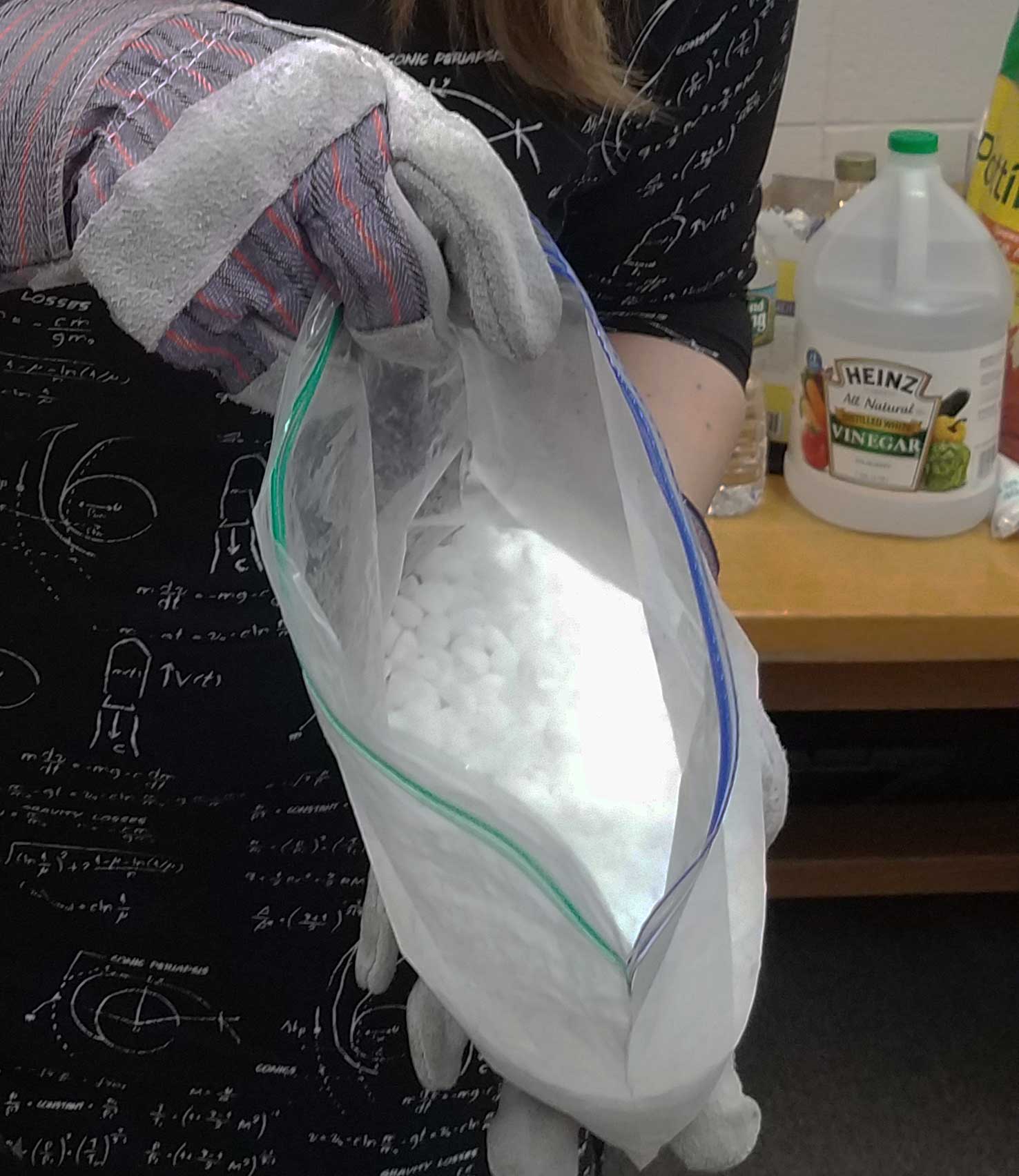
- Still wearing the gloves, quickly pour the crushed dry ice into the bowl and mix everything with the spoon for about 5 seconds. Put down the spoon and gather up the edges of the trash bag and prepare to lift it up out of the bowl. Gently squeeze the contents of the bag together. There will be a lot of escaping gas, so be careful not to squeeze the bag shut. After a few seconds, stop moving your hands around and just hold the contents of the bag while applying firm pressure. Continue holding for about 30 seconds. Then slowly start to release the pressure and make sure that the object in the bag feels solid.
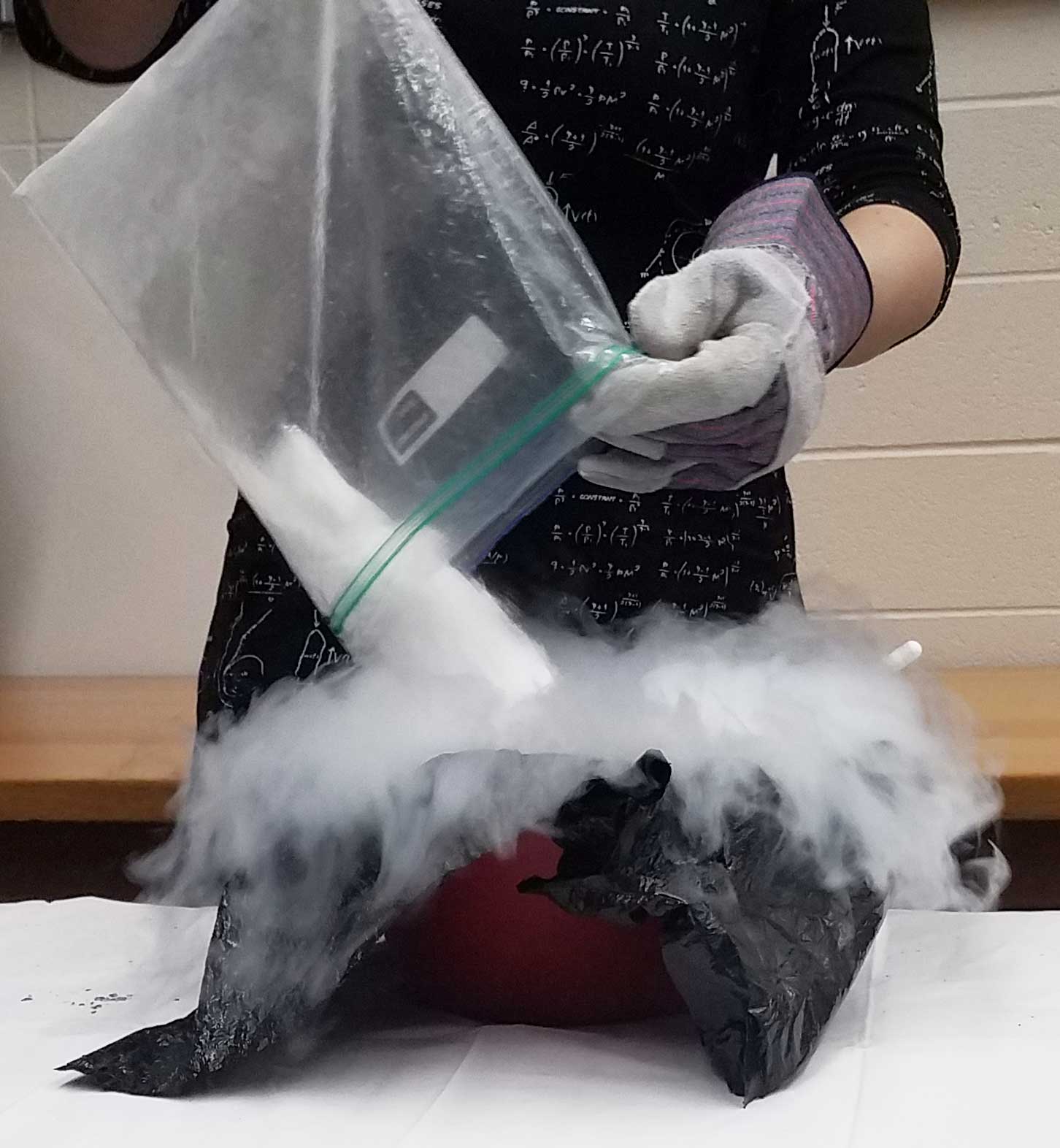
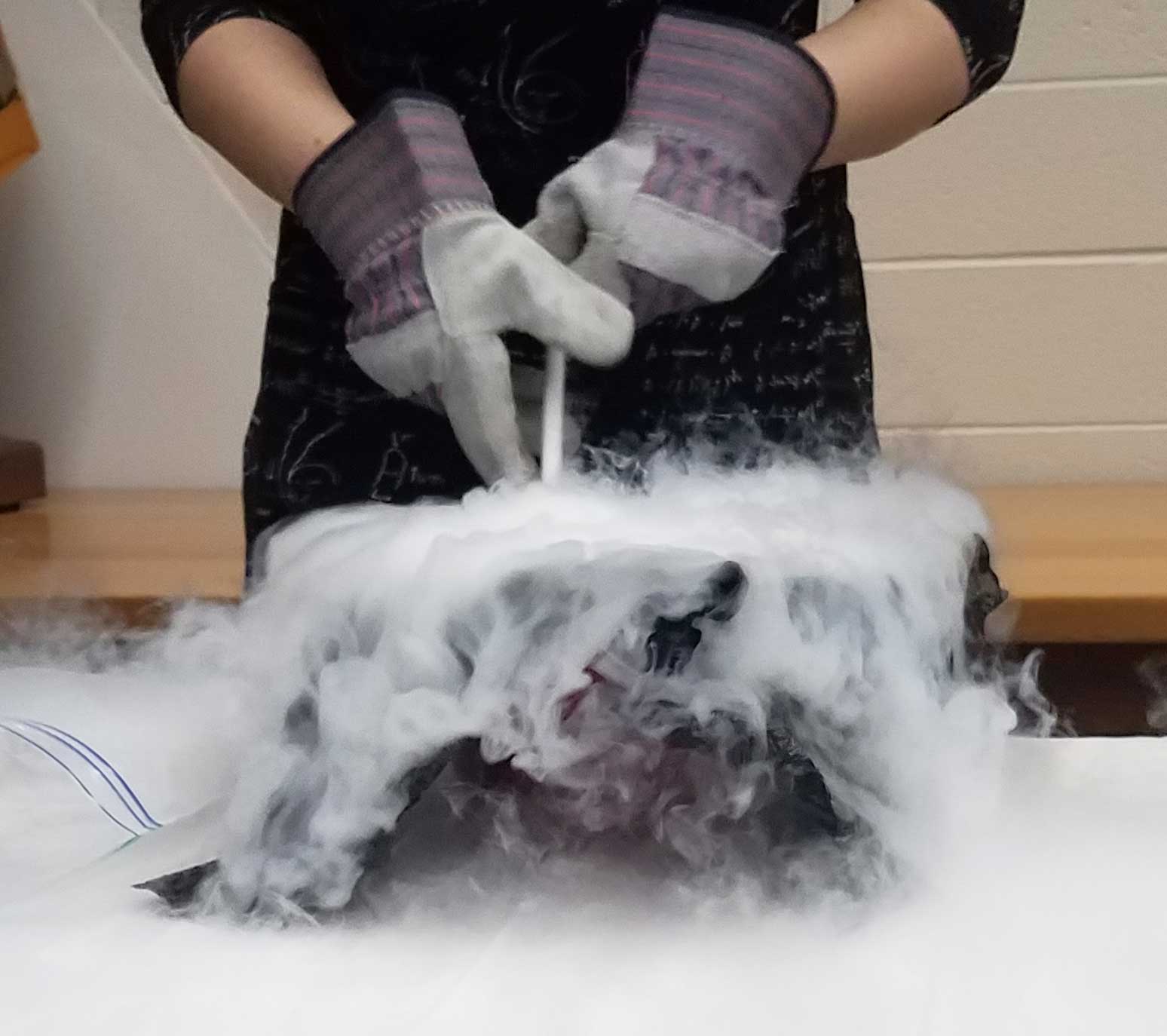

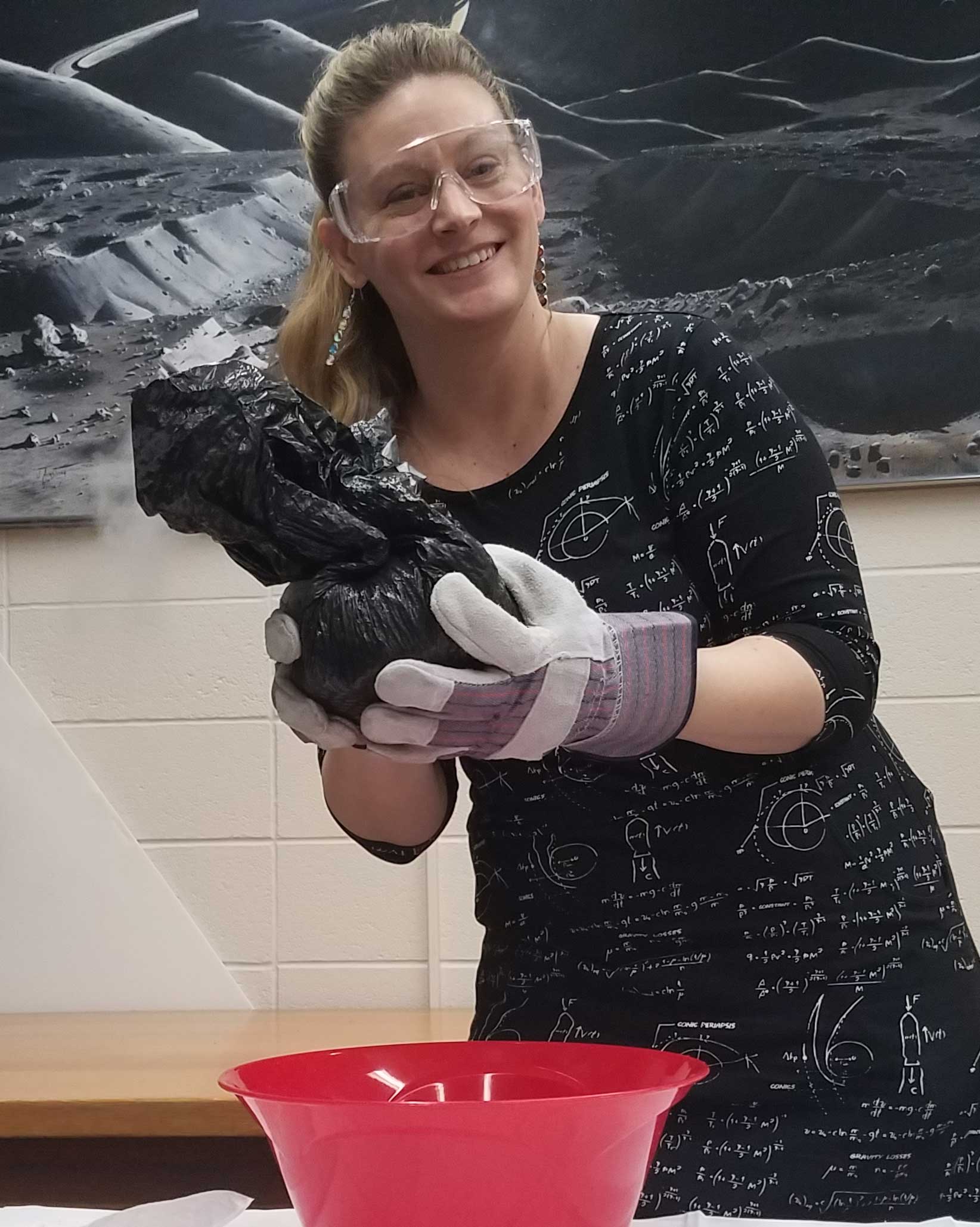
- Put the bag back in the bowl and unwrap it. Inside is your comet! With gloved hands you can pick it up and examine it.
Note: It sometimes takes a few tries to get the comet to come out just right, and the measurements given here are only approximate. If you’re planning this as a demonstration or to lead a group in this activity, make sure you practice on your own first. The most common issue is a crumbly comet, which is not really a failure since some comets do break apart over time, but for a more solid comet try adding more water and/or crushing the dry ice finer next time.
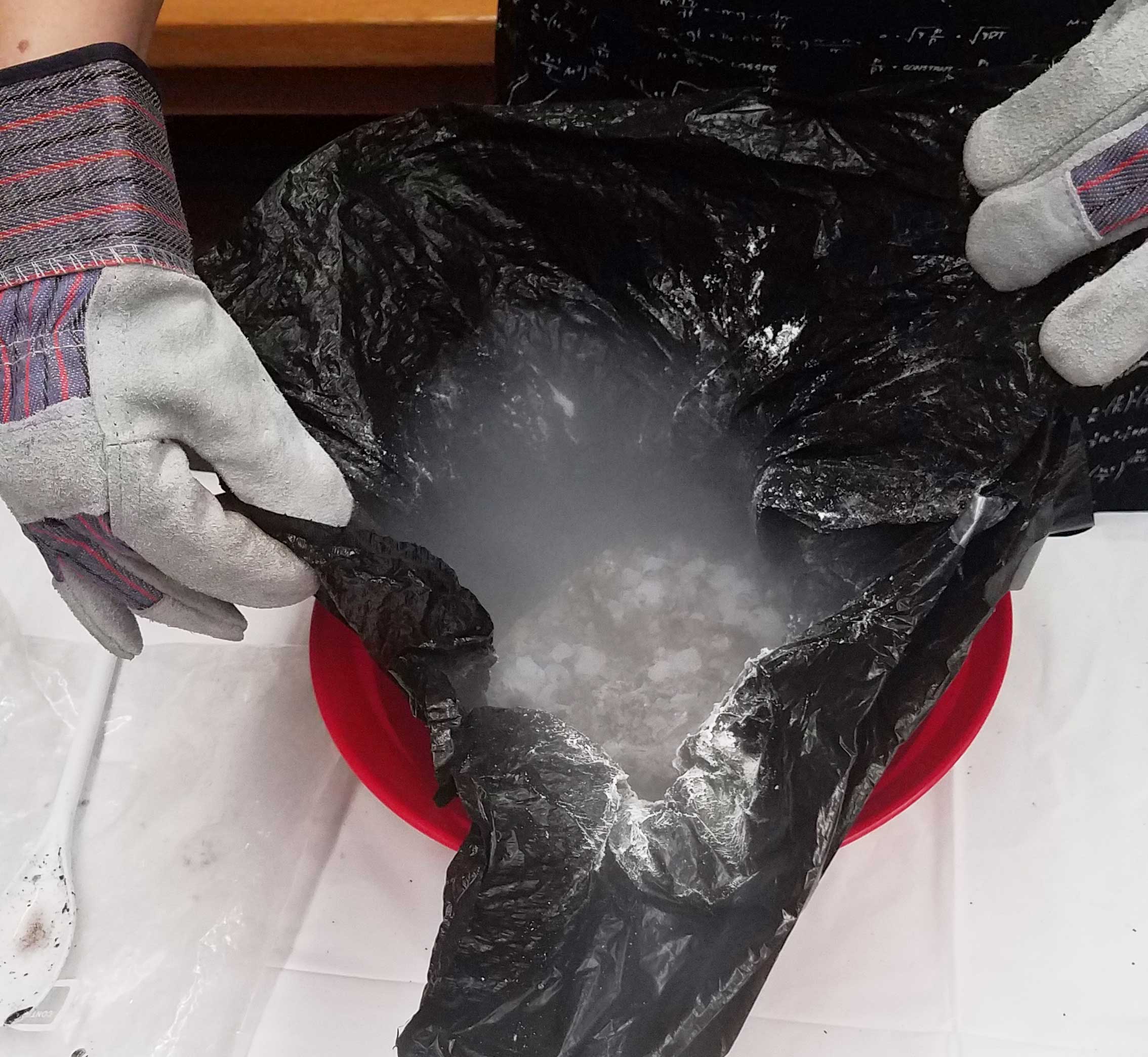
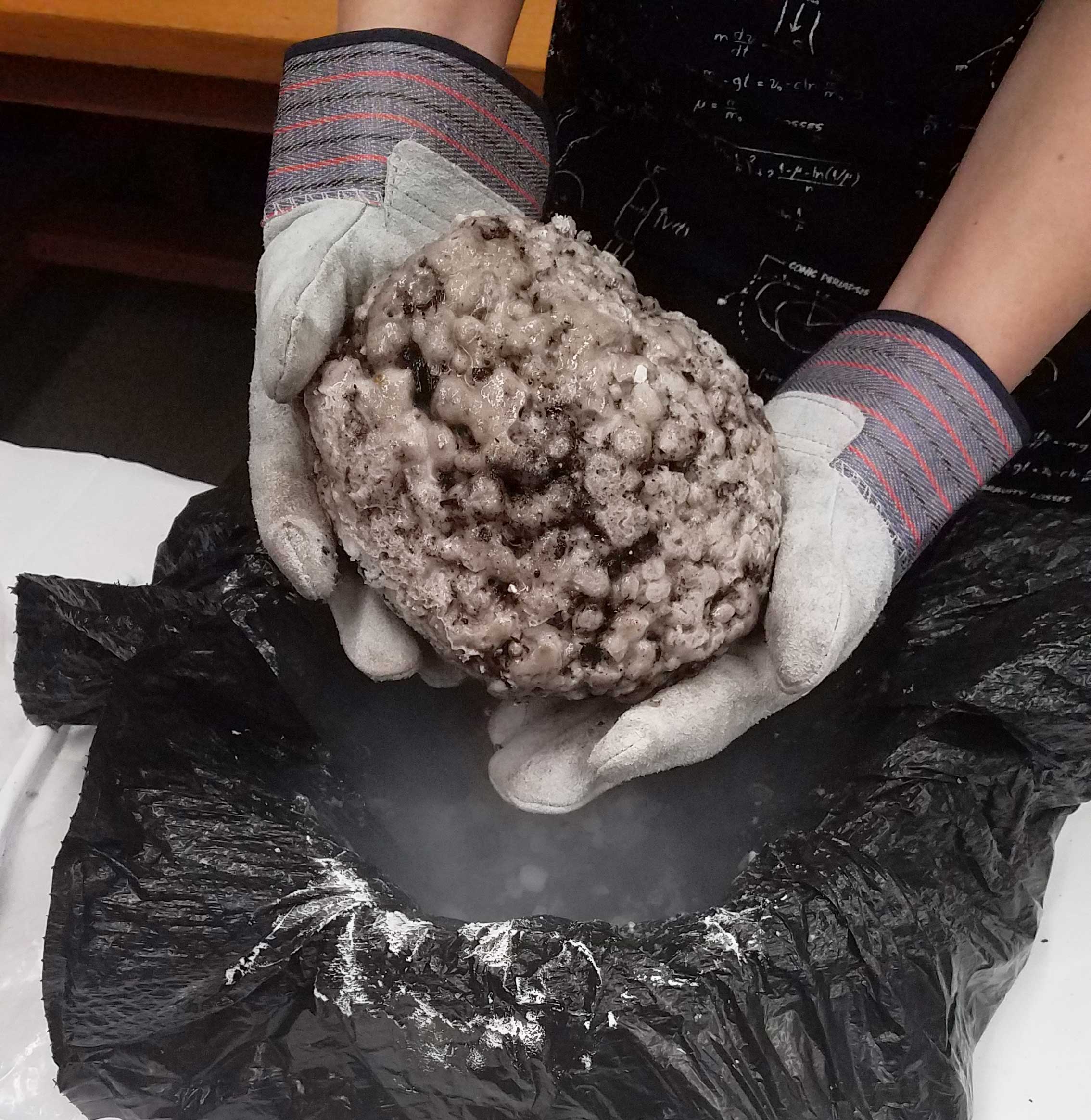
Fun With Your Comet
Phases of matter: Weigh your comet, and then put it back in the bowl without the trash bag and leave it. Every half hour, take the liquid out of the bowl and weigh the liquid and comet separately. Notice how the comet is losing mass in two ways: the solid water (ice) is melting into liquid and the solid carbon dioxide (dry ice) is sublimating into gas, which escapes to the air where it can’t be weighed. The change in weight proves the gas has mass. We also observed this in the weight of the dry ice pellets. Gas may see weightless because it floats around, but it’s weight is what keeps it from floating off into space. We have an atmosphere because of the weight of the air.
Comet’s Tail: As the comet’s carbon dioxide (dry ice) sublimates into gas, it briefly forms a cloud around the comet. This is known as the coma. Use a fan or hairdryer to blow on the comet and send gas in the coma trailing away from the comet to form a tail. This happens when a comet passes close to the Sun. Move the comet slowly past the fan or hairdryer and notice that the tail faces away from the source of the wind, not away from the direction of movement. When a comet passes by the Sun, the tail always faces away from the Sun, not behind the comet in its orbit. That means when the comet is moving away from the Sun the tail is in front of it. This is because the solar wind creating the tail is moving much faster than the comet.
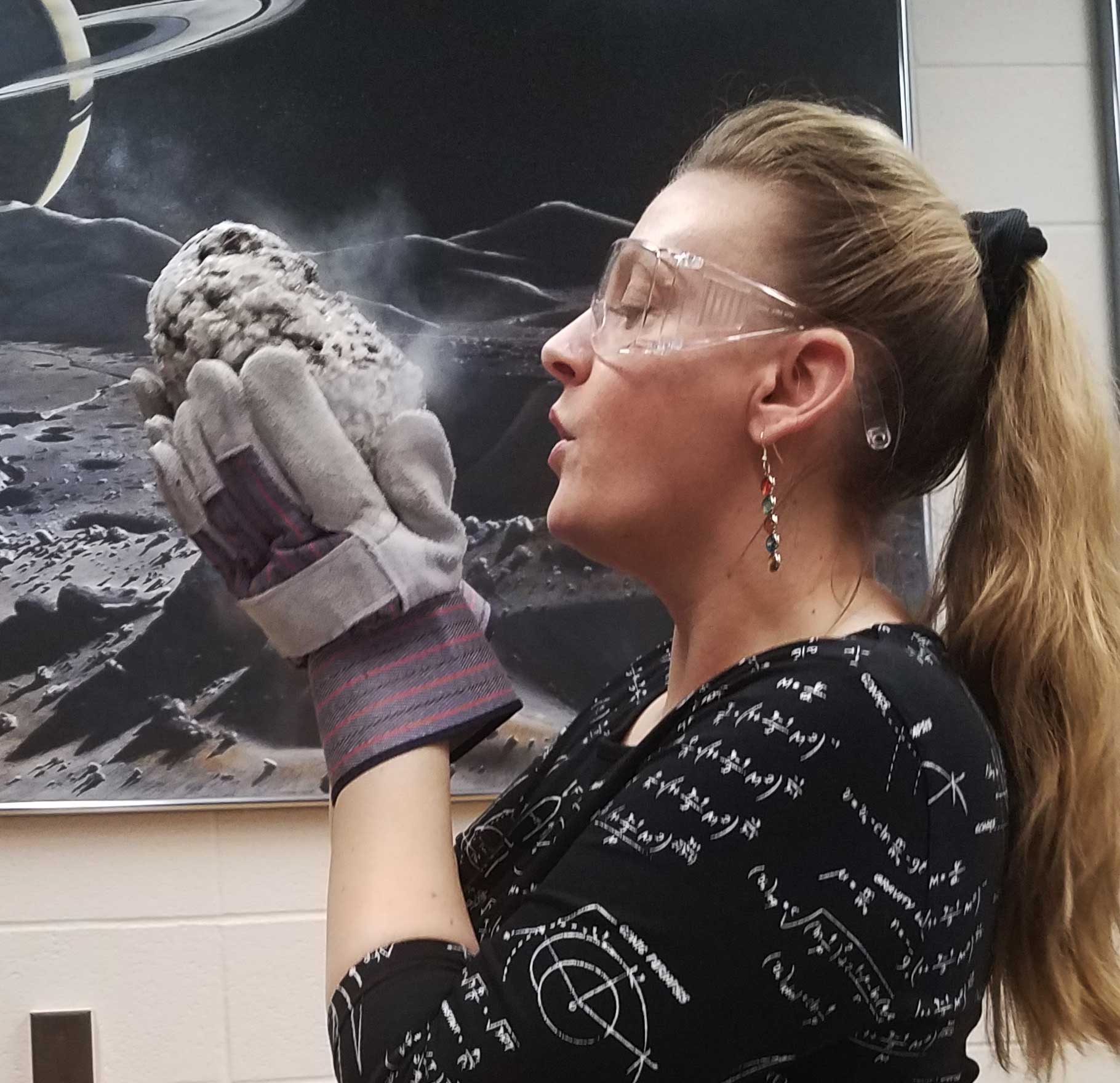
Comet Impact: Play catch outside with your comet, until someone drops it and causes a cometary impact on the Earth. Not worry, though. Unlike real cometary impacts, yours won’t cause mass extinction of life on Earth. As destructive as cometary impacts are, they also are likely responsible for there being life on Earth in the first place. Your comet contains water and several basic organic compounds (in the soil and optional ingredients), just like real comets. In fact, some complex organics have been found in comets, such as the amino acid glycine. The young Earth was too hot for water and organics to have formed at the surface, so they must have been delivered here sometime after the surface of the Earth cooled through impacts with colder objects from the outer solar system like asteroids and comets.
